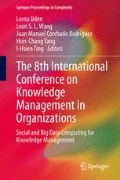Abstract
Knowledge productions within the academe have been strongly focused on publication in journals included in the Thomson’s ISI Web of Science (WOS) database. Within the WOS database, mechanical science and engineering researches ranks among the top five of the most highly presented topics in Taiwan. Since 1997 mechanical science research contributions have been steadily growing. To date there are a total of 9,576 mechanical science articles included in the WOS database with a contributing author coming from Taiwan. Many bibliometric theorists have proposed that within a specific field of study, 80 % of the articles are contributed by 20 % of the field’s source journals. In light of this issue, the current study seeks to understand what type of publication distribution exists in the pool of mechanical science researches in Taiwan. The understanding of publication trends is able to bring about valuable insights regarding significant contributions of key journals and the corresponding articles within them. Key finding shows that mechanical science researches follows the majority trend of older articles having the most number of citations, while, newer articles having a significant higher number of authors and references. Lastly, distribution analysis shows that the mechanical science researches in Taiwan behave in a likely pattern somewhat similar to the Revised Welch Vitality Curve. Additional, insights and trends are also provided to have a more complete picture of the mechanical science and engineering research field in Taiwan.
Access this chapter
Tax calculation will be finalised at checkout
Purchases are for personal use only
References
Anderson MS, Ronning EA, Vries RD, Martinson BC (2007) The perverse effects of competition on scientists’ work and relationships. Sci Eng Ethics 13:437–461
Braam RR, Moed HF, Vanraan AFJ (1991) Mapping of science by combined cocitation and word analysis: 1. structural aspects. J Am Soc Inf Sci 42(4):233–251
Thelwall M, Vaughan L, Cothey V, Li XM, Smith AG (2003) Which academic subjects have most online impact? A pilot study and a new classification process. Online Inf Rev 27(5):333–343
Ching GS (2012) 40 years of language studies: a bibliometric study of research articles in Taiwan. Asian EFL J 64:53–74
Gumpenberger C, Wieland M, Gorraiz J (2012) Bibliometric practices and activities at the University of Vienna. Libr Manag 33(3):174–183
Lewison G, Cunningham P (1991) Bibliometric studies for the evaluation of trans-national research. Scientometrics 21(2):223–244
Van den Berghe H, Houben JA, de Bruin RE, Moed HF, Kint A, Luwel M, Spruyt EHJ (1998) Bibliometric indicators of university research performance in Flanders. J Am Soc Inf Sci 49(1):59–67
Glenisson P, Glanzel W, Janssens F, De Moor B (2005) Combining full text and bibliometric information in mapping scientific disciplines. Inf Process Manag 41(6):1548–1572
Ingwersen P, Christensen FH (1997) Data sea isolation for bibliometric online analyses of research publications: Fundamental methodological issues. J Am Soc Inf Sci 48(3):205–217
Janssens F, Leta J, Glanzel W, De Moor B (2006) Towards mapping library and information science. Inf Process Manag 42(6):1614–1642
Beck SE, Manuel K (2008) Practical research methods for librarians and information professionals. Neal-Schuman Publishers, Inc., New York
Broadus RN (1987) Toward a definition of “bibliometrics”. Scientometrics 12(5–6):373–379
Fairthorne RA (1969) Empirical hyperbolic distributions (Bradford-Zipf-Mandelbrot) for bibliometric description and prediction. J Doc 25(4):319–343
Bookstein A (1976) The bibliometric distributions. Libr Q 46(4):416–423
Glanzel W (2007) Characteristic scores and scales: a bibliometric analysis of subject characteristics based on long-term citation observation. J Informetrics 1(1):92–102
Oluić-Vuković V (1997) Bradford’s distribution: from the classical bibliometric “law” to the more general stochastic models. J Am Soc Inf Sci 48(9):833–842
Nisonger TE (2008) The 80/20 rule and core journals. The Serials Librarian 55(1–2):62–84
Braun T, Glänzel W, Grupp H (2005) The scientometric weight of 50 nations in 27 science areas, 1989–1993. Part 1. All fields combined, mathematics, engineering, chemistry and physics. Scientometrics 33(3):263–293
Chang YW, Cheng TW (2012) Characteristics and trends of research articles authored by researchers affiliated with institute of chemical engineering in Taiwan. J Taiwan Inst Chem Eng 43(3):331–338
Cheng YL, Hoa MN, Lee DJ (2010) The 2008 summary of scientific productivity of chemical engineering, civil engineering and mechanical engineering professionals in Taiwan. J Taiwan Inst Chem Eng 41(1):96–97
Chang YW (2012) Tracking scientometric research in Taiwan using bibliometric and content analysis. J Libr Inf Stud 10(2):1–20
Patel P, Pavitt K (1994) The continuing, widespread (and neglected) importance of improvements in mechanical technologies. Res Policy 23(5):533–545
Best JW (1970) Research in education. Prentice Hall, Englewood Cliffs
Palmquist RA (2001) Bibliometrics. http://www.gslis.utexas.edu/~palmquis/courses/biblio.html#TOP. Accessed 5 Jan 2008
Arnold BC (2004) Pareto distribution encyclopedia of statistical sciences. John Wiley & Sons, Inc., In
Brookes BC (1968) The derivation and application of the Bradford-Zipf distribution. J Documentation 24(4):247–265
Welch J (2005) The vitality curve. Leadership Excellence 22(9):4–5
Acknowledgments
This work is supported by the Taiwan National Science Council under grant number NSC 100-2511-S-262-004.
Author information
Authors and Affiliations
Corresponding author
Editor information
Editors and Affiliations
Rights and permissions
Copyright information
© 2014 Springer Science+Business Media Dordrecht
About this paper
Cite this paper
Wang, WL., Ching, G.S. (2014). A Bibliometric Study on the Mechanical Science and Engineering Researches in Taiwan. In: Uden, L., Wang, L., Corchado Rodríguez, J., Yang, HC., Ting, IH. (eds) The 8th International Conference on Knowledge Management in Organizations. Springer Proceedings in Complexity. Springer, Dordrecht. https://doi.org/10.1007/978-94-007-7287-8_13
Download citation
DOI: https://doi.org/10.1007/978-94-007-7287-8_13
Published:
Publisher Name: Springer, Dordrecht
Print ISBN: 978-94-007-7286-1
Online ISBN: 978-94-007-7287-8
eBook Packages: Computer ScienceComputer Science (R0)

